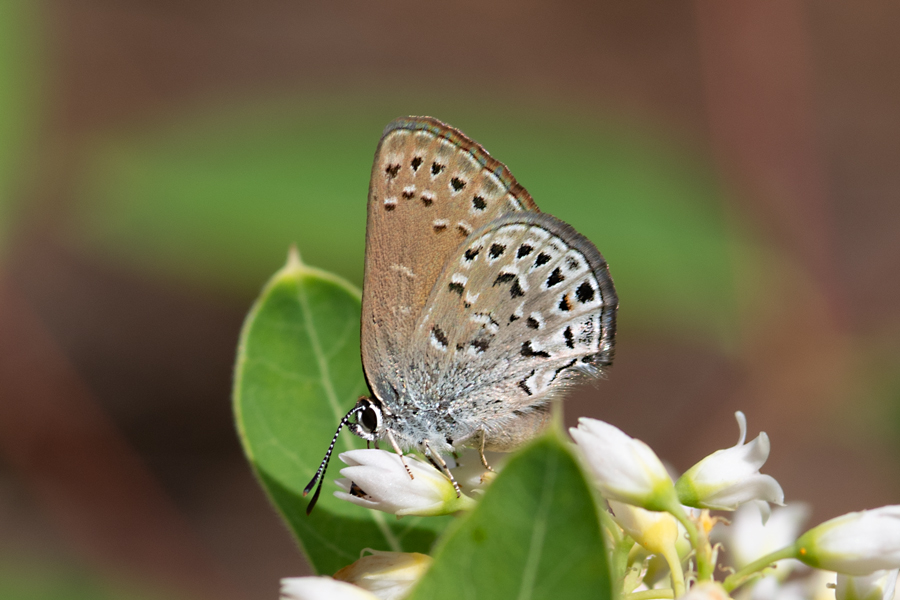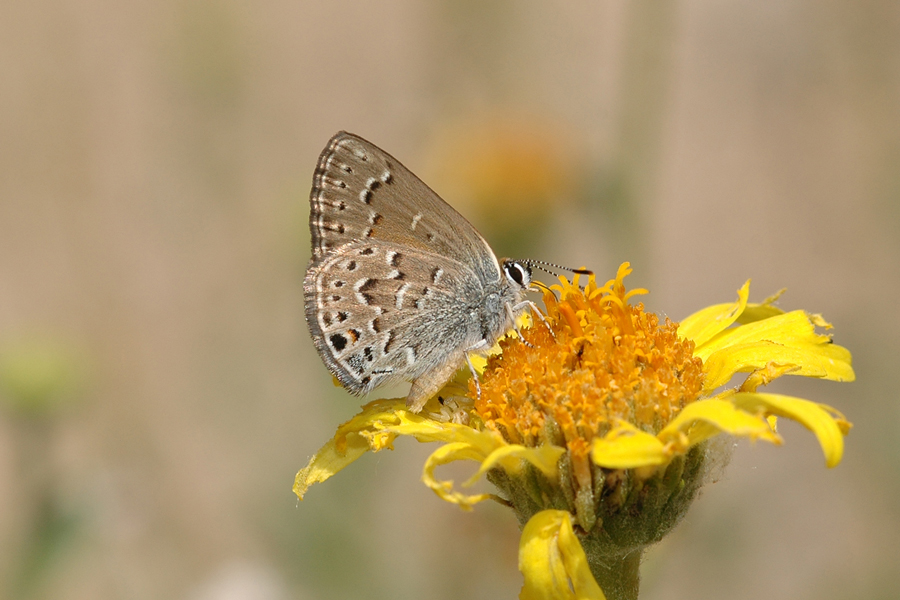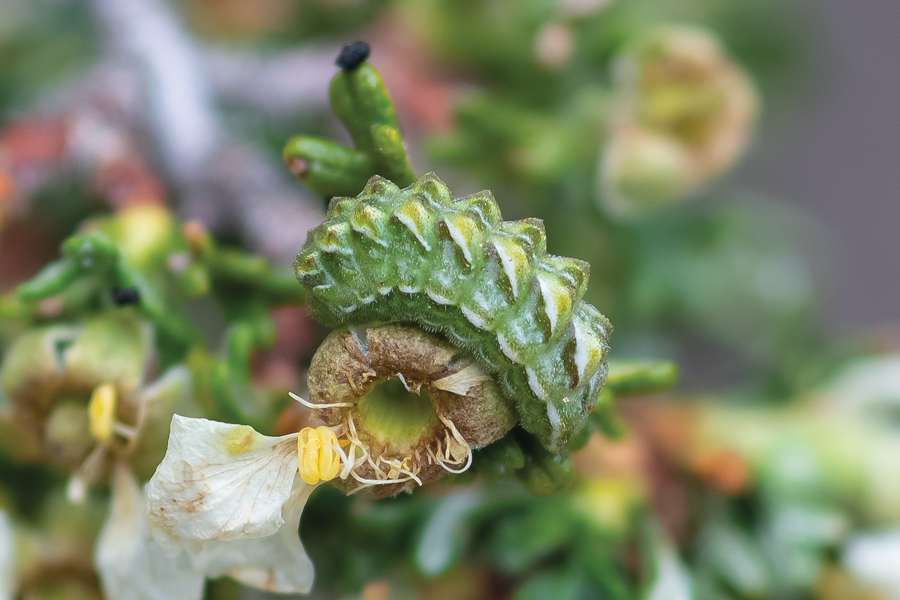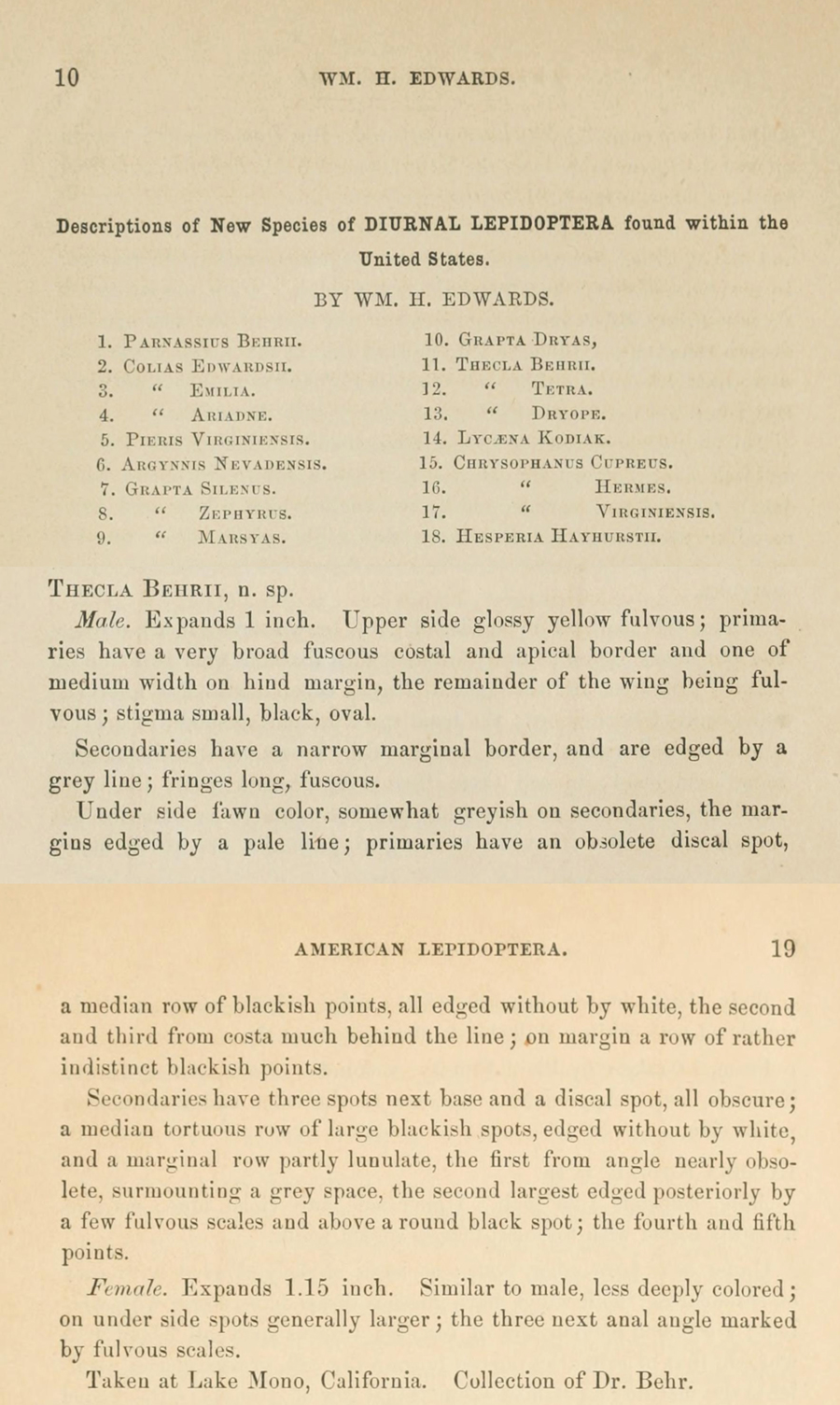Satyrium behrii behrii
Behr's Hairstreak
This is a hairstreak without tails that is adapted only to Purshia tridentata, antelope brush or bitterbrush, in the Rosaceae family. Tridentata and glandulosa - once thought to be different species - are now considered varieties of species tridentata; behrii will use either variety as larval food. Its caterpillars blend well to the green leaves of the plant. Adults fly mostly in June, and into July, and can be found taking nectar from a variety of plants. As with other Satyrium species, eggs are the overwintering stage, so larvae and pupae precede flights.
Identifying this handsome hairstreak shouldn't be a problem, as it's quite distinctively marked. They keep their wings folded, and while feeding on flowers they are very tame. The lack of tails is curious, but if there are tailled blues, then why not tailless hairstreaks?

Satyrium behrii behrii taking nectar from flowers of Indian hemp. Green Canyon, southeast of Big Bear Lake. The only one I've seen this year so far, but I've heard they are common in certain areas around Big Bear this year. July 9, 2021.
Behr's hairstreak, Satyrium behrii behrii. Valyermo Road, Antelope Valley, May 13, 2007.
Gordon Pratt was kind enough to give me a caterpillar of Behr's hairstreak, Satyrium behrii behrii, to photograph. I'm pretty sure it's on Purshia tridentata. May 28, 2023.
William Henry Edwards named what was then Thecla behrii in 1870 in Transactions of the American Entomological Society. He named it honoring the remarkable Hans Hermann Behr, from whose collection these butterflies came. Behr died in San Francisco in 1904, and his large and important collection of butterflies was at the California Academy of Sciences, where it was tragically destroyed in the earthquake of 1906.
©Dennis Walker



